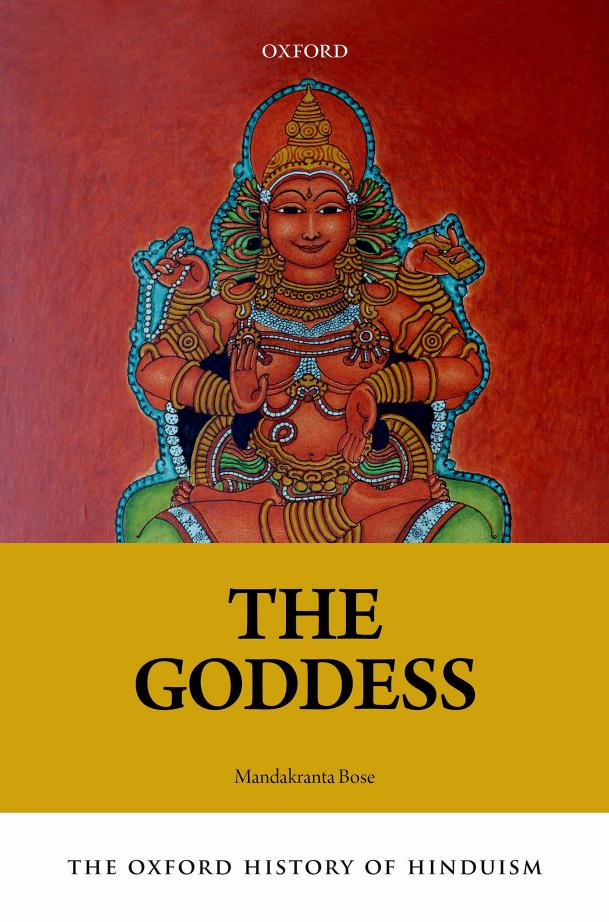The Oxford History of Hinduism: The Goddess by Mandakranta Bose

Author:Mandakranta Bose
Language: eng
Format: azw3, pdf
ISBN: 9780191079696
Publisher: OUP Oxford
Published: 2018-05-30T16:00:00+00:00
Feminist Critiques and Reappropriations of Sītā
There is a long history of the feminist movement’s engagement with Sītā. Early feminists, such as Pandita Ramabai Ranade, Annie Besant, and Sarojini Naidu, offered reinterpretations of Sītā’s story as exemplary for the emancipation of the modern Indian woman.109 From the 1970s onwards, though, feminists frequently dismissed the self-effacing Sītā as an oppressive cultural stereotype. Thus, the report Towards Equality by the Committee on the Status of Women in India in 1974 deplores the references to submissive heroines like Sītā in school textbooks.110 Feminists tended to blame the Sītā model as an ideology of slavery that led women to internalize patriarchal values.111 Some even use the term “doormat Sītā.”112
Typically, what such feminists criticize is the story as they remember it being told to them to keep them in their place, without distinguishing between the particulars of different versions. Frequently singled out in these feminist critiques is Sītā’s agni-parīkṣā, which is linked with widow-burning and the so-called bride-burning in connection with dowry-murders. As two prominent feminists have observed: “With Sita as our ideal, can sati [widow burning] be far behind? It is this overarching ideology of male superiority and female dispensability that…accepts the silent violence against women that rages in practically every home across the country.”113 This sentiment is also well summed up in a Hindi letter by a Benares woman that was published in English translation in Manushi: A Journal about Women and Society in 1983 that bore the bold title “No more Sitas”: “Now we must refuse to be Sitas. By becoming a Sita and submitting to the fire ordeal, woman loses her identity. This fire ordeal is imposed on women today in every city, every home.”114
Recently a consensus has arisen around a more nuanced assessment. Madhu Kishwar, the editor of Manushi (who is self-professedly not a feminist), has long called for not rejecting Sītā as a cultural ideal outright, but instead for using the tradition’s own potential to combat harmful anti-women rhetoric within which such cultural ideas are deployed. Over the years, Manushi has published many articles on what could be called “alternative Sītās” that highlight Sītā’s strength and positive inspirational potential for women. Kishwar herself says that in listening to women (and men), she has come to appreciate this preoccupation with Sītā. She summarizes the results of her research succinctly in the title of one of her articles: “Yes to Sītā, No to Rām.” As she puts it: “Many people perceive Sita’s steadfastness as a sign of emotional strength and not slavery, because she refuses to forsake her dharma, even though Ram forsook his dharma as a husband.”115 Another such nuanced view puts the blame at the feet not of Sītā but the discourses she is made to serve:
The problem that women today have had with Sita as traditional role model has always been that she is cast as a goddess, a heroine-victim, or a pativratā. In these symbolic forms she has served male rather than female history. It is not she
Download
The Oxford History of Hinduism: The Goddess by Mandakranta Bose.pdf
This site does not store any files on its server. We only index and link to content provided by other sites. Please contact the content providers to delete copyright contents if any and email us, we'll remove relevant links or contents immediately.
| Chakras | Gandhi |
| History | Rituals & Practice |
| Sacred Writings | Sutras |
| Theology |
Fingersmith by Sarah Waters(2483)
Kundalini by Gopi Krishna(2135)
Wheels of Life by Anodea Judith(2093)
Indian Mythology by Devdutt Pattanaik(1897)
The Bhagavad Gita by Bibek Debroy(1896)
The Yoga of Jesus: Understanding the Hidden Teachings of the Gospels by Paramahansa Yogananda(1803)
Autobiography of a Yogi (Complete Edition) by Yogananda Paramahansa(1774)
The Man from the Egg by Sudha Murty(1741)
The Book of Secrets: 112 Meditations to Discover the Mystery Within by Osho(1628)
Chakra Mantra Magick by Kadmon Baal(1616)
The Sparsholt Affair by Alan Hollinghurst(1544)
Sparks of Divinity by B. K. S. Iyengar(1491)
Avatar of Night by Tal Brooke(1484)
Gandhi by Ramachandra Guha(1484)
Karma-Yoga and Bhakti-Yoga by Swami Vivekananda(1467)
The Bhagavad Gita (Classics of Indian Spirituality) by Eknath Easwaran(1452)
The Spiritual Teaching of Ramana Maharshi by Ramana Maharshi(1401)
Hinduism: A Very Short Introduction (Very Short Introductions) by Knott Kim(1344)
Skanda Purana (Great Epics of India: Puranas Book 13) by Bibek Debroy & Dipavali Debroy(1338)
